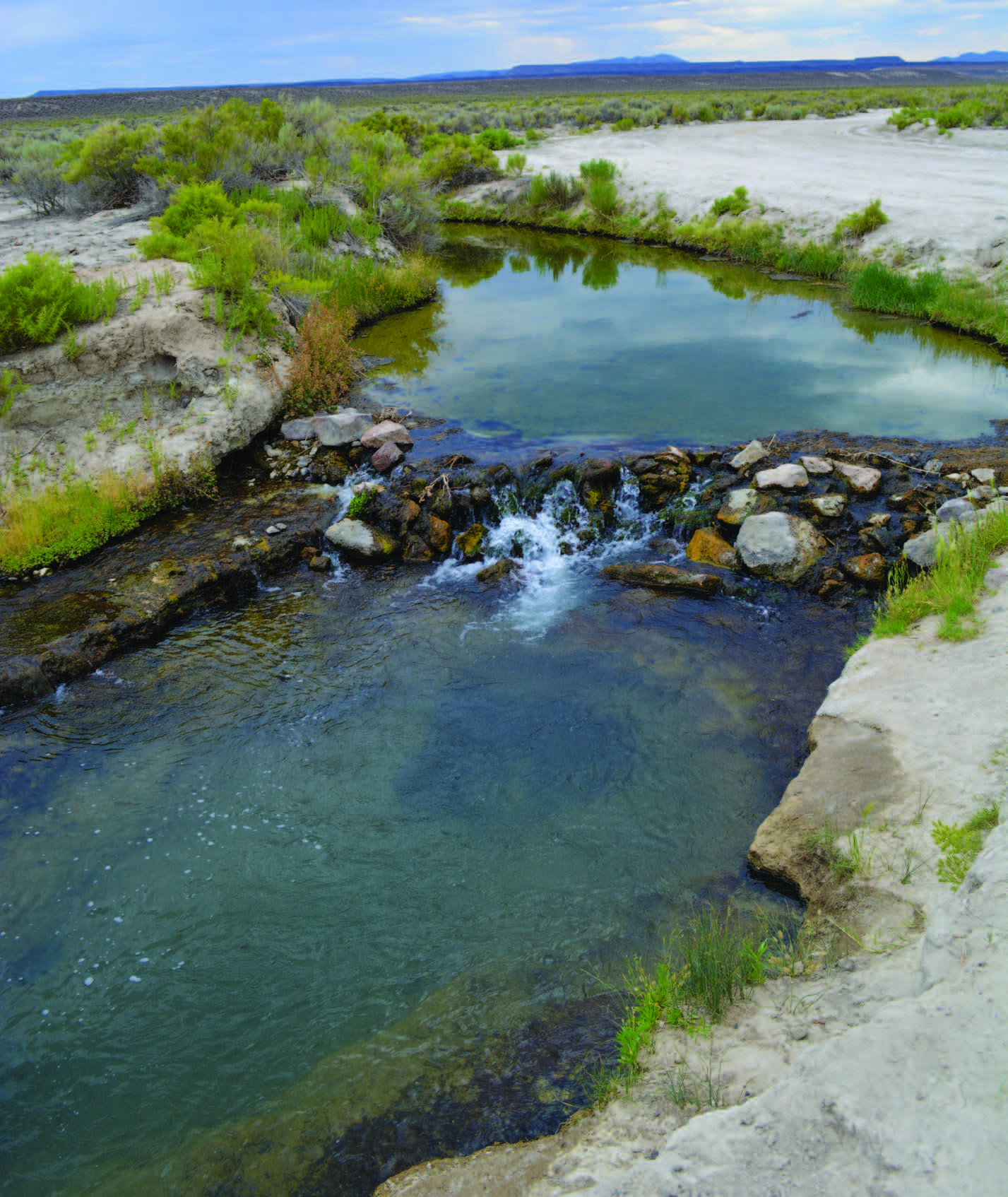Into the Wild
September – October 2014
Explore the jewel that is Nevada’s remote northwest corner.
BY MEGG MUELLER & ERIC CACHINERO
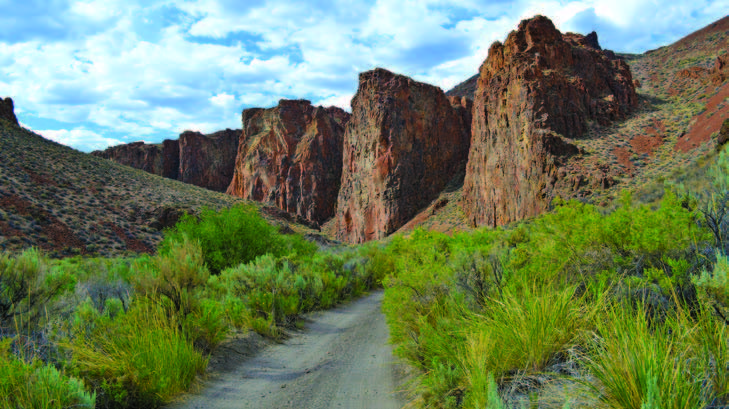
“There are no services. No water. Your cell phones won’t work. You will be on your own. PROTECT. RESPECT. SURVIVE.”
These somber words were our last warning as we left the pavement, released into the vast and unforgiving expanses of Nevada’s northwest corner. Armed with extra fuel, supplies, and what seemed like enough water to rehydrate the Black Rock Desert, we set off into one of the state’s most remote areas. Our odyssey destined us for grandeur and a little gleam, giving us pride in the fact that very few people since the pioneers have laid eyes on this majestic, yet desolate, forgotten corner of Nevada.
What brought us to this unacquainted corner of the state we know so well?
You did.
During Nevada Magazine’s yearlong quest to discover why our readers love Nevada, one of the most frequent answers we receive is its ‘wide open spaces.’ And so the Nevada Magazine editorial duo, appetites whet for adventure, decided to travel to Nevada’s hinterlands, blazing across more than 150 miles of washboard dirt roads, rocks, and dust, searching for those wide open spaces.
Follow us into the wild…
BOLDLY GOING WHERE I HAVEN’T BEEN BEFORE
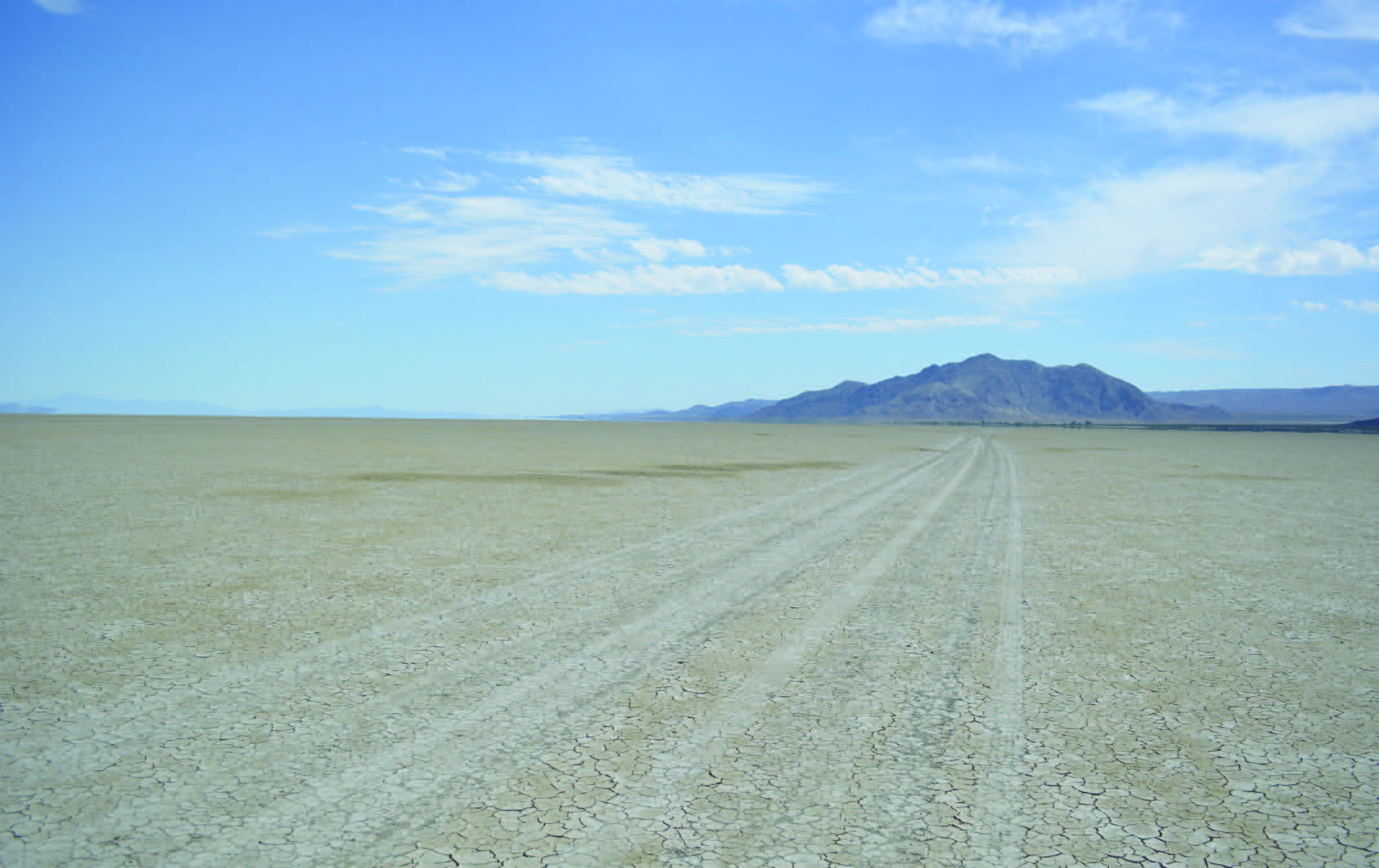
Cruising north of Interstate 80 on State Route 447, I was embarrassed to admit this to Eric, but just stopping for cash at the ATM in Wadsworth and looking at fireworks had me pretty happy. No way this trip was going to disappoint.
The 16 miles to Nixon is uneventful but full of beautiful morning vistas. We cruised through the reservation, past the Pyramid Lake Paiute Tribe Museum & Visitors Center, and on to Gerlach.
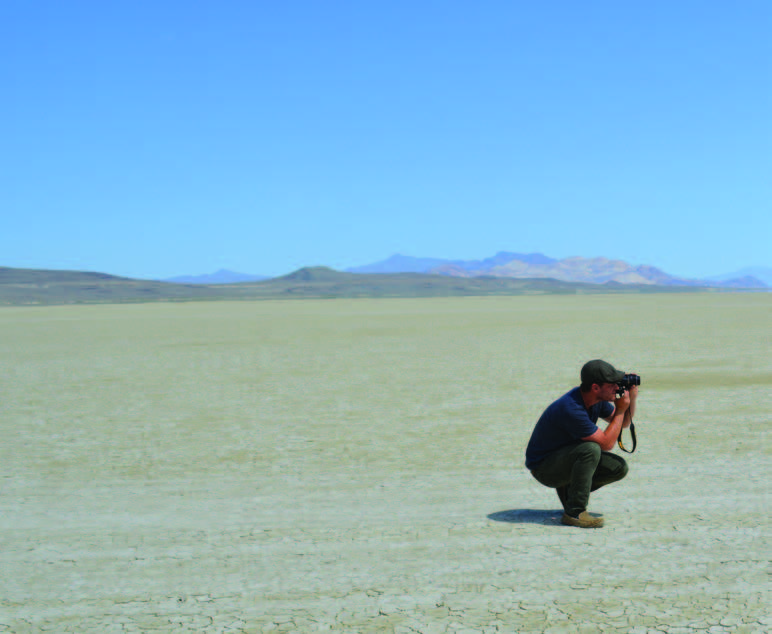
Just 107 miles after leaving Reno, we found the storefront for the Friends of Black Rock High Rock in Gerlach, where we stopped for maps, to chat, and look around. Before we continued, we got some final driving advice, as the pavement will soon be deep in our rearview mirror. Reassured, we left some magazines, and said goodbye. And then suddenly:
“That’s a lot of dirt.”
A lifetime as a writer, and my first sight of the Black Rock Desert reduces me to master of the obvious.
“Do you want to drive on the playa?” Eric asked. Hell yes, I want to drive on the playa.
I knew we were on the tiniest slice of this massive wilderness, but as we drove into the area best known for the annual Burning
Man event, all I could think of is this place is huge…and flat. We got out to take photos, and suddenly “hot” was added to my list of adjectives. It’s a funny place to take pictures, because there’s nothing for miles, but you have to shoot it anyway. Rimmed by mountain ranges, trees, and shrubs showing glimmers of now-unfamiliar green, the Black Rock playa is as I’ve always heard; unreal in its simple perfection.
TOTIN’ OUR PACKS ALONG THE DUSTY SOLDIER MEADOWS ROAD
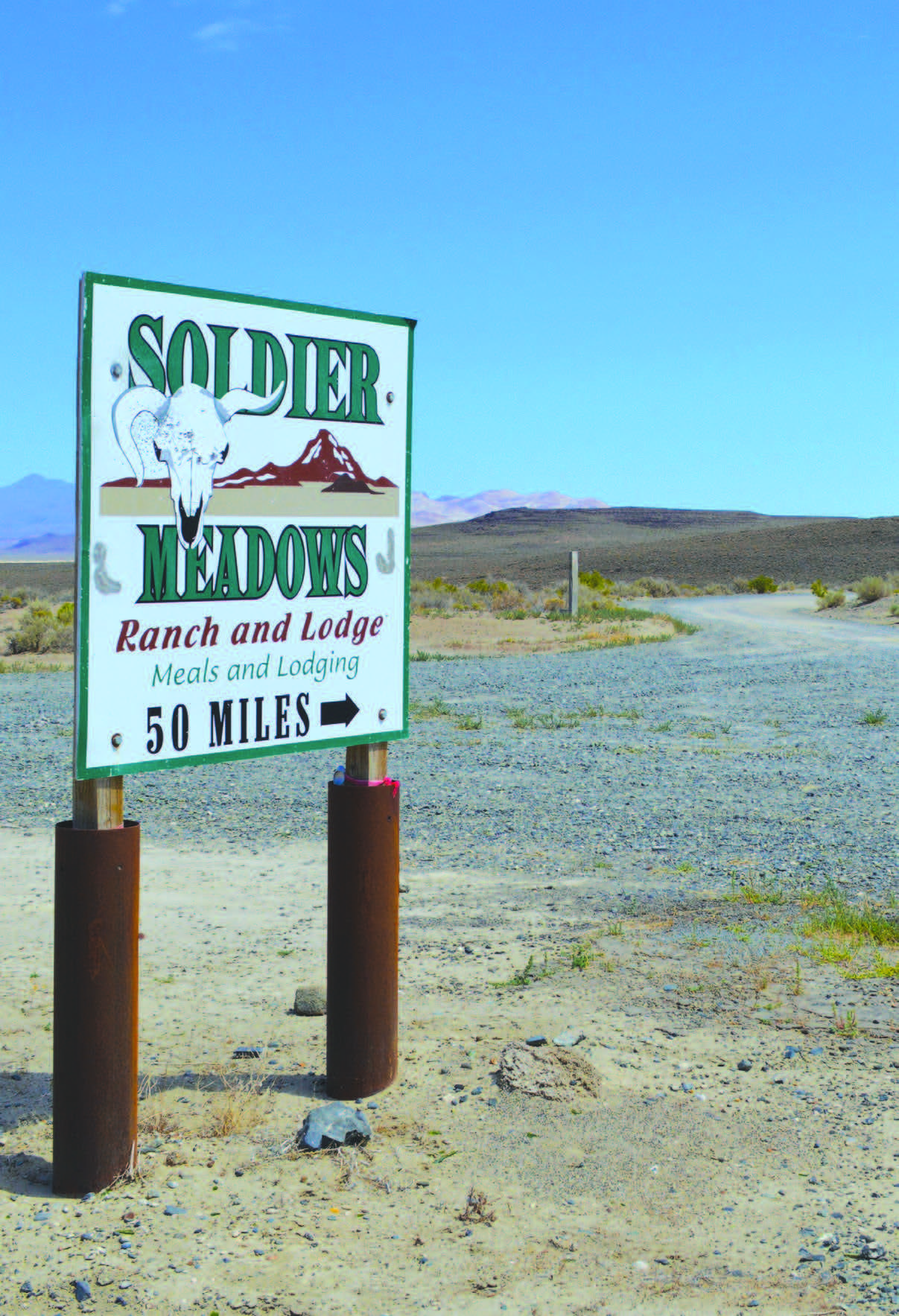
I must admit that a sliver of apprehension overcame me as our vehicle left the pavement, destined for dirtroad distances the likes of which I’ve never conquered before. Would our vehicle break down? Would we have to spend a night (or more) in the desert? I took some comfort knowing we were stocked with survival supplies and a GPS locator in case things went south. And if you decide to do this trip, you should be prepared too—seriously.
Along with the aforementioned warning sign, a tactfully placed quote from Nevada explorer John C. Frémont gave me a hint of comfort knowing that we weren’t the only visitors this desert has intimidated in the past two centuries. In 1843-44—according to the sign—Frémont was the first euro-American to see the Black Rock Desert, writing, “The appearance of the country was so forbidding, that I was afraid to enter it.”
Our destination was Soldier Meadows Guest Ranch—the only oasis in the desert for miles. This working ranch provides visitors with beds, showers, and a hot, ranch-style dinner and breakfast.
The 50-mile dirt road to the ranch provides seemingly endless views of the illustrious wide open spaces. Anomalous rural ranches and a small assortment of opal mines stick out as being some of the only manmade structures to occupy the expanses.
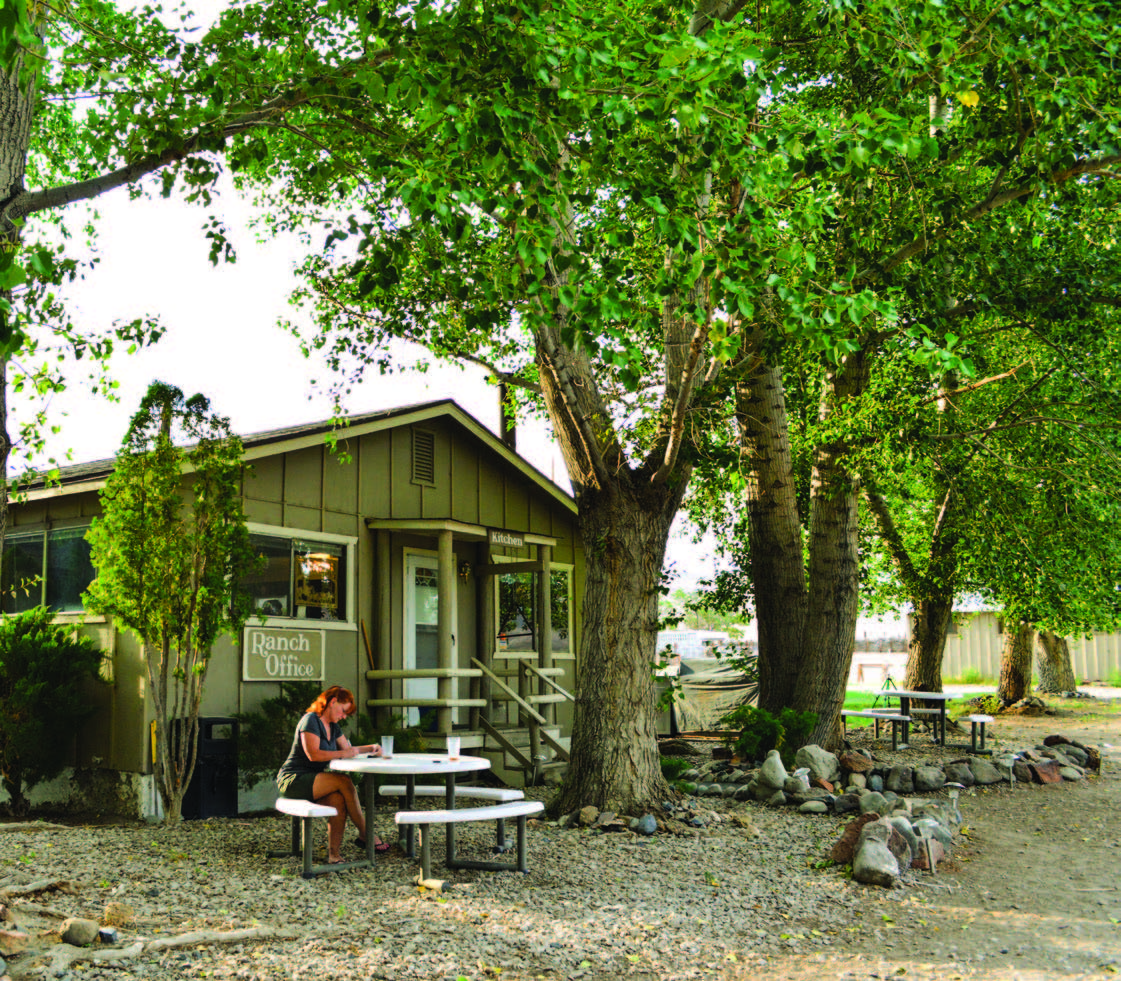
After what seemed like 1,000 miles of washboard roads and just as I was convinced the wheels were going to fall off of our vehicle, a small patch of green perforated the desert scenery in the distance and I knew we had found our oasis. We soon arrived to a bucolic abode covered in green trees and even greener pastures. Panting ranch dogs greeted us as we stretched our legs and got settled in, only to quickly begin planning our next adventure.
IT’S HOT IN THEM THAR HILLS
After a picnic lunch at the ranch with the eight dogs keeping a close watch on our cold cuts, we headed for High Rock Canyon and Soldier Meadows Hot Springs;
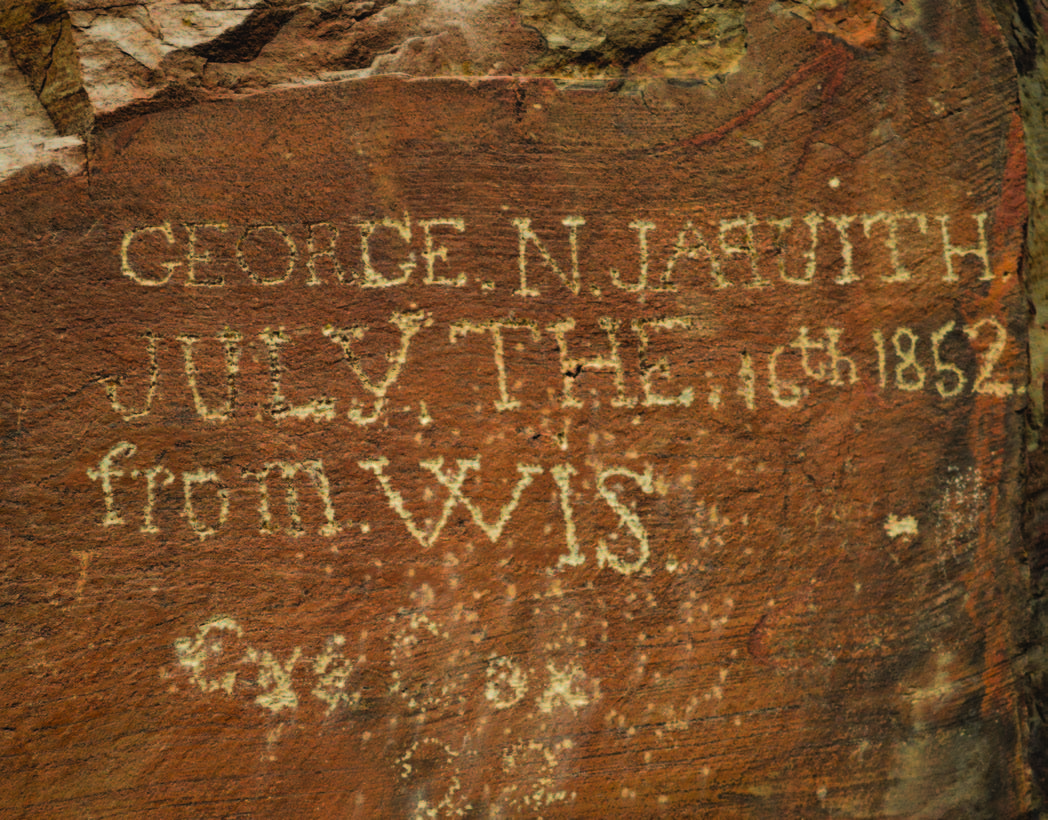
Eric’s been to the latter, but I’d yet to see a natural hot springs. We spied a cabin in the middle of nowhere, and headed over. It was a Bureau of Land Management building, available first-come. The shelves were full of canned goods, propane, dog biscuits, contact lens solution, and more, left by visitors paying it forward. There was a table, bed frame, and plenty of room to get out of the elements. Unfortunately the elements were 105-degree temps, but it looked to be cozy for fall or winter camping. There were also reading materials, so we left a magazine, signed the guest book, and moved on.
The hot spring wasn’t easy to spot, but Eric knew the way so we wandered down a hill on a well-marked path and there it was; a hole in the ground with a creek leading to it, except the water is hot. Again, master of the obvious, but knowing it and feeling it are two different things. Despite being well used, the area was debris free; I chalked this up to the remote location.
I don’t love heights, so as we headed into High Rock Canyon, I was hoping for more canyon than anything else. The road required some pretty slow going and careful navigation, but I was secretly thrilled it climbed and dropped only mildly. The road is open only after May, due to the area’s raptor breeding and bighorn sheep lambing season. We had hit the mother lode I thought, as we traversed the canyon floor, spying myriad caves, emigrant signatures, rock faces that jut aggressively upward, and lichen-covered hills. The invisible creek that created this valley is overrun with verdant bushes and brush; add rock walls to this veritable buffet, and I knew the bighorn were there.
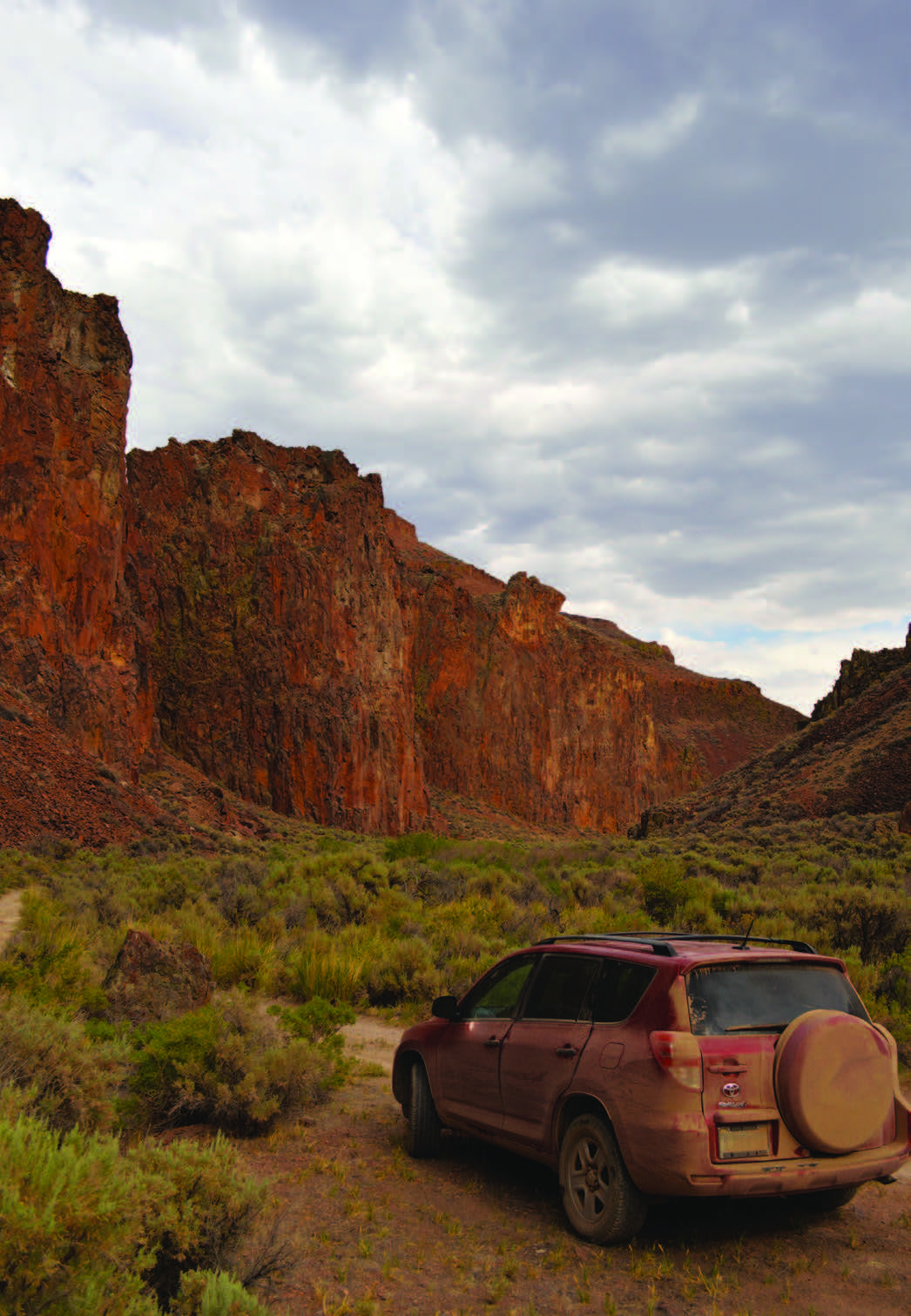
I constantly scanned the craggy hills, desperate for my first glimpse of Nevada’s state animal, refusing to listen as Eric reminded me it’s midday and unusually warm. We drove until Eric decided the state vehicle should go no further, then hiked a bit until we saw the canyon’s end. We headed back out the way we came, and as we were just about out of the canyon, I saw them. There, way up on a hill about 600 yards away, a pair of sheep. A ewe and a baby, but they were my first bighorns and I am elated.
We headed back for dinner, and join our hosts and the ranch staff for an amazing meal of delicately sauced chicken, green salad, rolls, and the tastiest side dish I’ve possibly ever had; corn and cheese. I have no idea what Brandy our cook did to create this odd but heavenly combination, but I didn’t skimp on seconds. Dessert’s lemon bars made me wish I had room for another, but I’ll never regret the corn and cheese.
ON THE ROAD AGAIN
We awoke to a hearty ranch-style breakfast of bacon, eggs, sausage, and all the fixin’s before departing our newfound friends at the ranch and continuing north along Soldier Meadows Road. Although the first couple miles past the ranch were fairly rocky, we took it slow and were soon united with a smooth dirt road, en route to the small border town of Denio Junction.
Bands of wild horses lined the hillsides in the distances, and a solitary antelope buck caught our attention as we moseyed up the road. What the country lacks in tourist attractions, it sure makes up in spectacular scenery. It’s not the first time I’ve felt infinitesimal amongst the expanses of Nevada, but as far as wide-open spaces go, we had hit the jackpot.
As we approached State Route 140—the first pavement we had seen in nearly 150 miles—not a single vehicle had passed us since our departure from Gerlach. But alas, during the last mile before the pavement, a single off-road motorcycle went buzzing past us in the opposite direction, and the “rush hour in rural Nevada” jokes became aplenty.
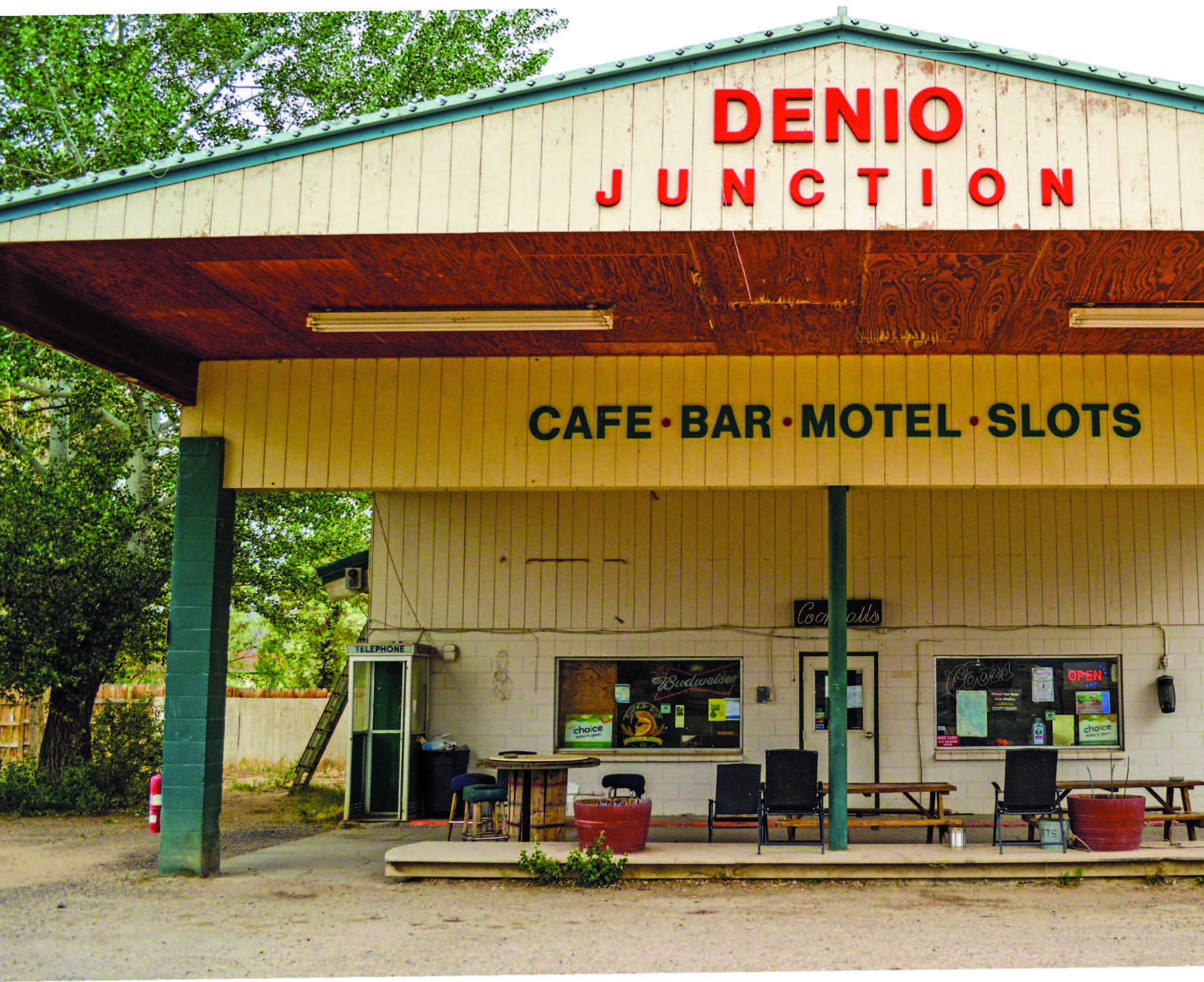
THESE HILLS LOOK “OPAL-Y”
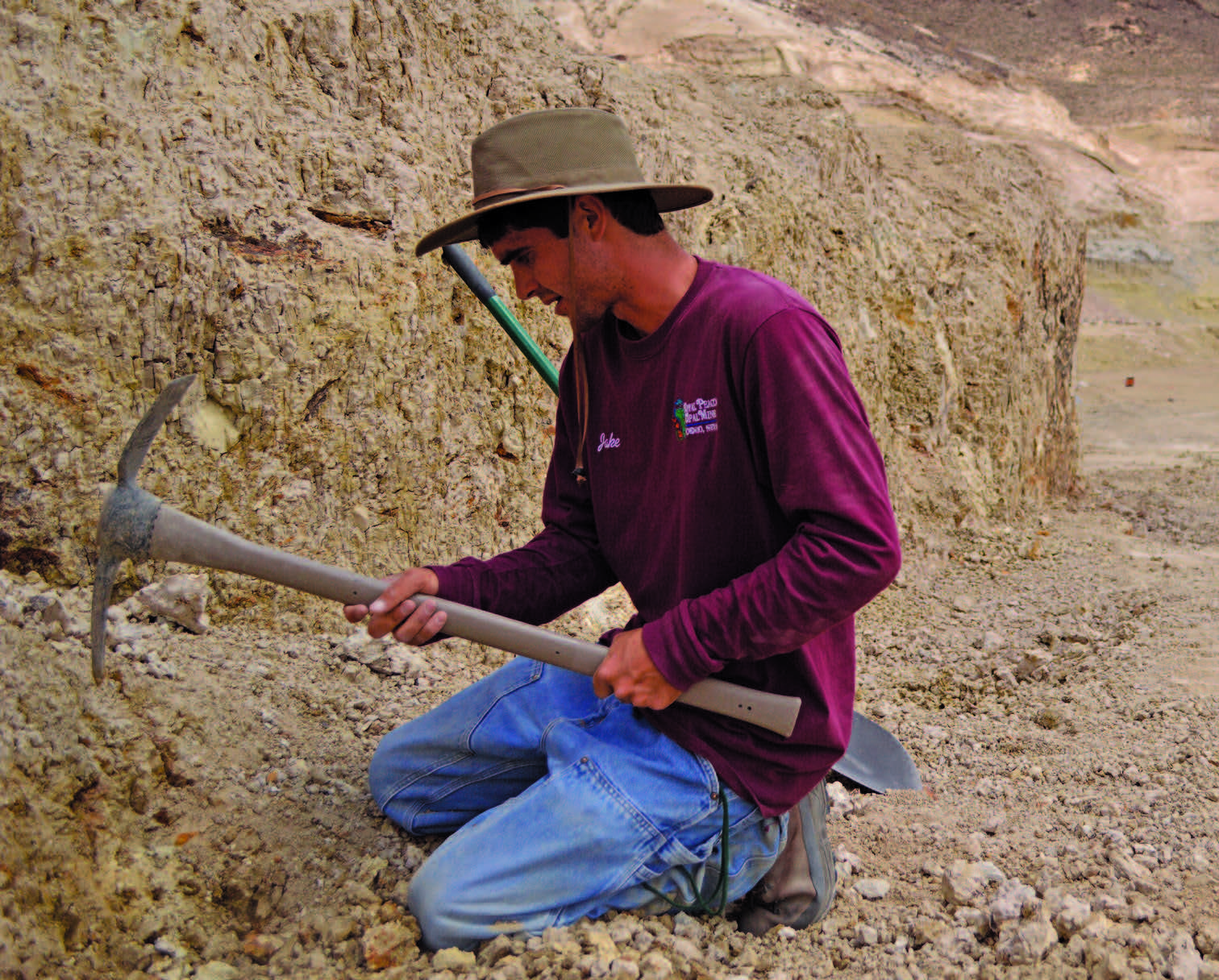
Ready for more adventure, we set out for the Royal Peacock Opal Mine. It was tempting to chill at the Denio Junction Motel, but the idea of precious gems waiting in the hills 35 miles west was too alluring. Royal Peacock’s original proprietors, Harry and Joy Wilson, lobbied to have the Virgin Valley Black Fire Opal acknowledged by the legislature, and in 1987 it became the state’s precious gemstone. The Wilson’s daughter, Julie, and her son, Jake, now run the mine.
We passed wild burros and horses grazing along the lands surrounding Dufurrena Ponds, and wound our way back to the mine, where Julie gave us a quick look at the various opals we could find, including the rare black fire opal.
Jake met us on the hill, and our geology lesson got underway. Spotting these gems is tough; opals are made from silica-packed solutions settling into cracks and voids, which can occur in rocks, tree branches, you name it. As the deposit dries and the cycle recurs, the gem is formed. To our untrained eye, it looked like a bunch of dirt and rocks, but Jake patiently showed us where to dig, and the proper technique. Eric and I quickly think everything with a sparkle is an opal, but with Jake’s guidance we actually helped uncover a piece of black opal, about 1 inch high, and maybe 2.5 inches long. It’s fragile and ended up in two pieces but that works for us; now we don’t have to share.
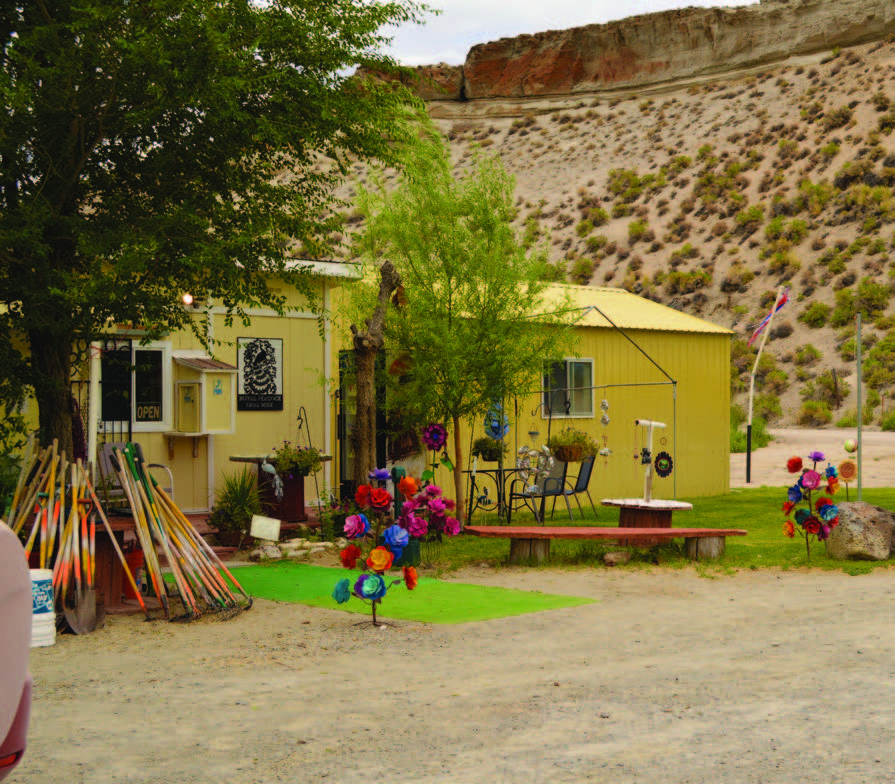
Our score won’t change our lives, but like spotting bighorn, to us it’s heady stuff. We kept working the hill and each found a few more small pieces of varying types. Our head’s swim with Jake’s encyclopedic knowledge and the sweltering temperatures, so we called our foray into opal mining a success and head back for a cool drink and pictures of Royal Peacock’s RV and camping area.
WHEN IN DENIO
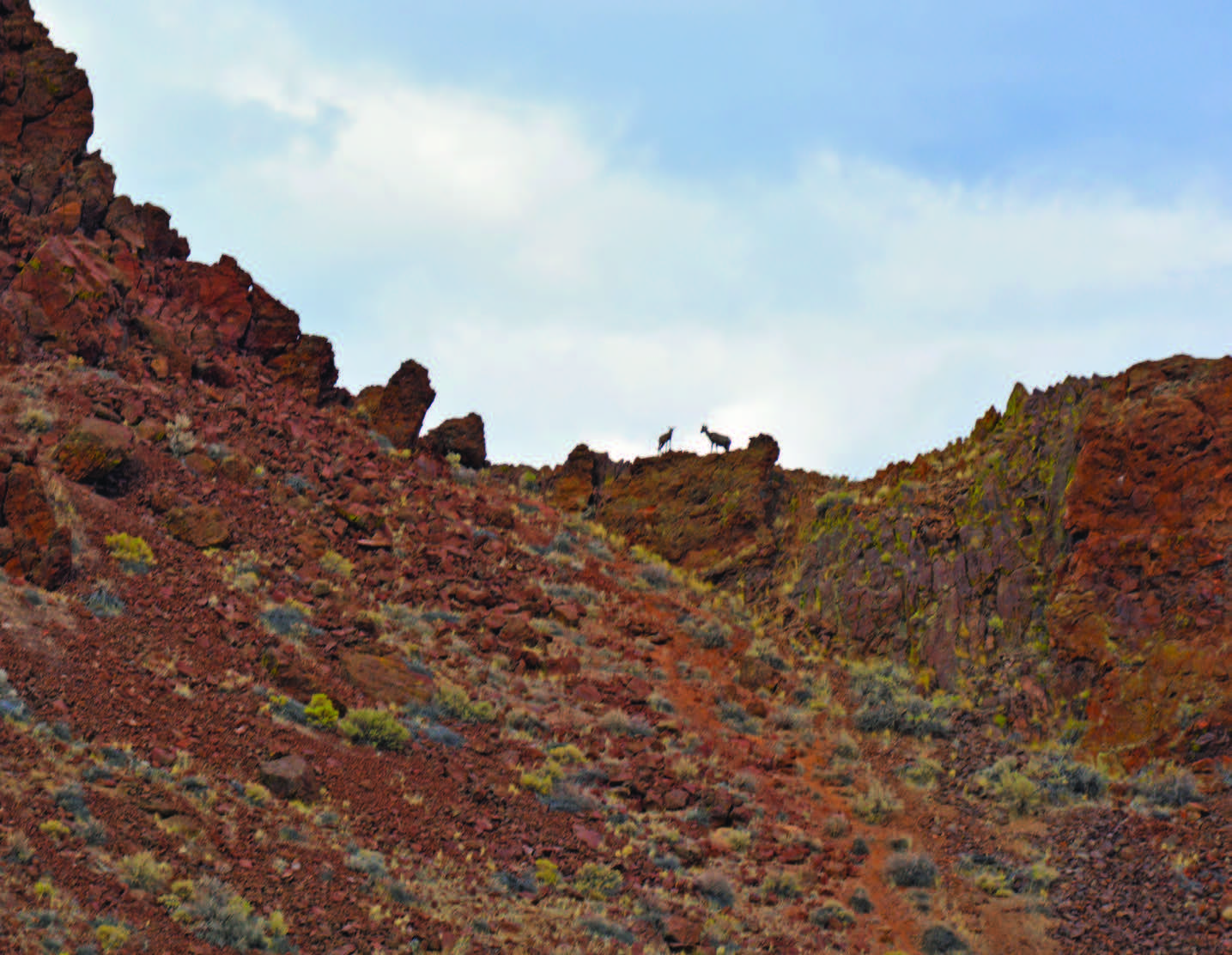
After striking it rich (sort of ) and armed with a newfound knowledge of h w opals are formed, we decided to survey some of the area attractions.
Our first stop was Virgin Valley Campground, located approximately 28 miles from Denio Junction. The site is a popular destination for hunters (wildlife and gem), and offers drinking water, a spring-fed swimming hole, and a rustic shower house. The nearby Dufurrena Ponds are known for their sunfish, perch, and largemouth bass fishing. A short distance from the campground via dirt road is one of the area’s natural wonders: Thousand Creek Gorge. The gorge is exemplary of some of the spectacular geological scenery in the area.
As we took in more sights, the periods between exchanging yawns in the car began to dwindle and my gut grumbled at the thought of the highly acclaimed and anticipated burger that awaited us at Denio Junction. But first, we decided to make one more stop before calling it quits for the day.
We traveled east on S.R. 140 en route to Denio Junction before turning off the pavement at a sign that read “Bog Hot Road.” Keeping true to my desire to visit at least one new hot spring each time I travel in the state, we followed the dirt road for several miles before coming upon another local attraction aptly named Bog Hot Springs. Though the sweltering July temperatures dissuaded us from taking a dip, I added another must-revisit to my seemingly limitless list of Nevada destinations to come back to.
Soon we found ourselves back at the junction, each inhaling a Denio Burger and a cold beer, ready to hit the hay at the Denio Junction Hotel. Though not your typical Vegas suite, the rustic rooms provided us with a retreat from the heat and a good night’s sleep.
BACK TO REALITY
After days of searing temps, we awoke to overcast skies and spitting rain. Probably the only two things that could make us glad to rejoin the pavement on our trip back to Carson City via Winnemucca. I felt like I was in an alien world, where vehicles travel at high speeds, and fast-food places dot the landscape. It had only been three days, but that was plenty of time to succumb to the treasure and solitude that is Nevada’s least-traveled area, the stunning, often silent but visually resplendent northwest corner.
We definitely overpacked, but looking back, perhaps we both had a secret wish to spend a few extra days off-road and in the wild. Next time, for sure.
